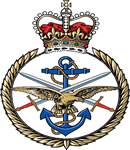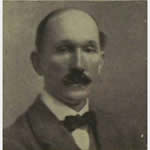Commemorated: | |||
| 1. Memorial: | Basra Memorial | Panel 57 Basra | |
| 2. Book: | The (1921) Masonic Roll of Honour 1914-1918 | Pg.123 | |
| 3. Memorial: | The (1940) Scroll - WW1 Roll of Honour | 37A GQS | |
Awards & Titles: | |||
Family :
Son of Maj. Gen. George Farquhar Irving Graham (late Bengal Staff Corps) and L. J. Graham; husband of Lilias H. Graham.After returning home from two long campaigns he married his wife in 1903, reported by the Dundee Evening Telegraph on 24th November 1903:
“FASHIONABLE BLAIRGOWRIE WEDDING
(By a Lady Correspondent)
Yesterday a very pretty wedding took place in St Catherine’s Church, Blairgowrie, the contracting parties being Miss Lilias Hunter Hill-Whitson, eldest daughter of Mr Charles Hill-Whitson of Parkhill, Blairgowrie, and Captain George Humphrey Irving Graham, Devonshire Regiment, Son of General Graham.
The Bride was given away by her Brother, Captain E. Hill-Whitson
Education & Career :
St Paul's School.
Service Life:
Campaigns:
- The Second Anglo-Boer War 1899-1902, South Africa.
- The First World War 1914-1918, World-wide.
| Unit / Ship / Est.: 44th Merwara Infantry |
| Action : Mesopotamia |
At the outbreak of war the British, together with Indian troops, resolved to protect oil supply in the region by occupying the area around Basra at Abadan. This evolved into a series of campaigns towards Baghdad against the Turkish forces as Mesopotamia (modern Iraq) was part of the Ottoman Empire. Meetings in late 1914 and into 1915 led the Viceroy and Indian government at Simla to reconsider the limited involvement of troops and they decided to order further advances with a view to securing the Shatt-al-Hai, a canal connecting the Tigris and Euphrates river and potentially capturing Baghdad. The British government disagreed and wished to conserve forces for the Western front. The Viceroy was given permission to act as it wished, but told in no uncertain terms that no reinforcements should be expected.
The initial success experienced by the British and Indian forces quickly disintegrated in the face of Ottoman opposition. The Siege of Kut-Al-Amara began on 7th December with the besieging of an 8,000 strong British-Indian garrison in the town of Kut, 100 miles south of Baghdad, by the Ottoman Army. These campaigns produced few tactical benefits, indeed the catastrophic defeat at Kut in 1916 was a major setback. Badhdad was eventually taken in March 1917.
The conditions in Mesopotamia were dreadful. The climate, sickness and disease produced large losses in addition to battle casualties. About as many men died of disease as were killed in action. The Mesopotamia front was part of a strategy hoping for success at lower cost than the Western Front but no decisive victory was achieved.
The Nottinghamshire Guardian 1st January 1898:- “FROM THE RANKS, The Scots Greys is able to boast of having graduated through its ranks, first as privates, as many as six officers, all at present serving in other corps. Their names are :- Sergeant George Humphrey Irving Graham, who is gazetted to the Devonshire Regiment as Second Lieutenant….”
INDIA SERVICE
As soon as he was commissioned, the Devons were sent to India he took part in the campaign in the Punjab Frontier & the bloody Tirah campaign against the Afridis, during which he took part in the Capture of the Sempagha Pass and Arhanga Pass.
First came the battle for Dargai Heights on 20th October 1897 where numerous Victoria Crosses were earned.
Lieut Graham progressed through the difficult mountains with his battalion and fought to capture the Sampagha Pass leading to the Mastura Valley on 29th October in company with the K.O.S.B., 2 days later on 31st October he took part in the capture of the Arhanga Pass leading from Mastura into the Tirah Valley, capturing these narrow and treacherous passes allowed the main column to start inflicting punitive actions against the tribes, burning villages, crops, confiscating all weapons.
Unfortunately the baggage trains and scouting parties were not as lucky, being the subject of various ambushes and fell victim to Guerilla Warfare.
Upon the battalion departure Major General Symons published the following:
“In losing the 1st Bn Devonshire regiment from the 1st Division, the Major General Commanding desires to record his great appreciation of the good services through the campaign to this particularly efficient battalion. It is returning to Cantonments solely on the recommendation of the Medical Officer and on account of the scanty numbers to which it had been reduced owing to fever and sickness previously contracted in the the Peshawar Valley, it has been a great pleasure to the Major General to have this extremely well behaved and good fighting West Country Regiment in his command.”
After the campaign was finished, Lieut Graham, with 24 other Officers, 1 W.O. and 842 Other ranks were put on a Train on 16th September 1899 for Bombay from Jullunder, the set sail for South Africa, being one of the first regiments to arrive for war in South Africa on 21st September 1899.
SOUTH AFRICAN BOER WAR SERVICE
During the Boer War he took part in the following actions:
Operations in Natal during 1899 including Battle of Elandslaagte, Reilfontein, Lombards Kop.
He was also present during the Defence of Ladysmith including the action on 6th January 1900, known as the Battle of Wagon Hill (Platrand) on this day Boer Storming Parties under General CJ De Villiers began climbing Wagon Hill and Caesar’s Camp , after being spotted by British working parties who were emplacing guns, the Boers captured the edges of both areas but could not advance any further, the British also failed in their counter attacks.
At noon, de Villiers made another attack on Wagon Hill, some exhausted defenders panicked and fled, but Hamilton led reserves to the spot and recaptured some empty gun pits, late in the afternoon a terrific rainstorm broke out, leading the Boers to withdraw under the cover of it.
During this battle the British lost 175 Killed and 249 wounded, with 52 dead Boers left in British Positions they attempted to take.
He then took part in the operations in Natal from March to June 1900, followed by operations in Transvaal, including the battle of Belfast & Lydenburg.
The Morning Post, London 12th December Reports him on their casualty list as having been discharged from Hospital to duty during the week ending 2nd December 1900 for an unknown reason.
From September 1901 to November 1901 he was Officiating Intelligence Officer at Machadodorp.
He then returned to India with his Regiment on 19th January 1902 until 27th February 1903.
After marrying at home he went to India with his wife, the Army Gazette 21st April 1906 stating “Devonshire Regiment – Capt. G.H.I. Graham seconded for service as Adjutant of Indian Volunteers (February 8)”
He also served as Adjutant of the East Indian Railway Volunteers during March.
In 1911 he officially transferred to the Indian Army, the Army Gazette 25th March 1911:
The King has approved of the admission of the under mentioned officer to the Indian Army:- Capt G.H.I. Graham by exchange from Devonshire Regiment, February 18, Capt Grahams rank is post-dated to July 7 1906, and his rank as Lt to Oct 7 1899.
Detail :
World War 1 Service and Death in Action
Throughout the war until his death Major Graham was serving with the 44th Merwara Infantry, he met his end attempting to Relive the Siege of Kut.
When the war broke out the regiment arrived for service in Mesopotamia during early 1915 and took part in the Battle of Shaiba, Southern Iraq
Obituary in Dundee Courier & Daily Record 12th February 1916:
“BLAIRGOWIE MAJOR IS KILLED IN ACTION.
Yesterday it was learned with regret in the Blairgowrie district that Major George Humphrey Irving Graham
The deceased served in the ranks of the Scots Greys for five years, and then received a commission in the 1st Devonshire Regiment. In the Tirah campaign he received the medal and two clasps; in South African war he took part in the Defence of Ladysmith and gained the King’s and Queen’s medals and five clasps. In 1911, he exchanged into the Indian Army.
His widow and children resided at Stewart-town, Rosemount.”
Masonic :
| Type | Lodge Name and No. | Province/District : |
|---|---|---|
| Mother : | St George in the East No. 1526 E.C. | Bengal |
| Joined : | Kitchener No. 2998 E.C. | Northern India |
Initiated | Passed | Raised |
6th March 1908 | 20th March 1908 | 3rd April 1908 |
Unusually, George was initiated, passed and raised in less than one month (not permitted in modern times). Perhaps there was some rush to get from Jamulpur to Simla by 6th June to join Kitchener Lodge. He remained a member of his mother lodge for just two years, resigning on the 14th March 1910. He died as a member of Kitchener, with the register of the Lodge at the United Grand Lodge of England showing "Killed in action 7.2.16".
Source :
The project globally acknowledges the following as sources of information for research across the whole database:
- The Commonwealth War Graves Commission
- The (UK) National Archives
- Ancestry.co.uk - Genealogy, Family Trees & Family History online
- ugle.org.uk - The records of the United Grand Lodge of England including the Library and Museum of Freemasonry
Additional Source:
- Founder Researchers : Paul Masters & Mike McCarthy
- Researcher : Bruce Littley

